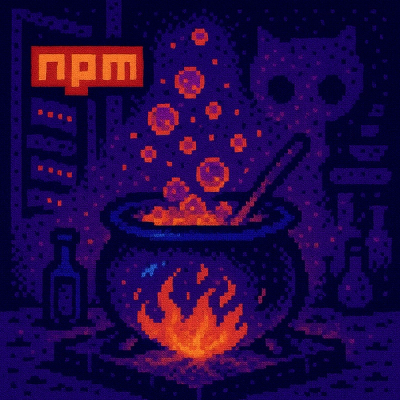
Security News
The Changelog Podcast: Practical Steps to Stay Safe on npm
Learn the essential steps every developer should take to stay secure on npm and reduce exposure to supply chain attacks.
@vtex/render-extension-loader
Advanced tools
Use render components from the comfort of your client-side code.
Create an app that serves a page under /legacy-extensions/ path on myvtex.com.
// pages/pages.json
{
"pages": {
"legacy-getting-started": {
"path": "/legacy-extensions/render-example",
"theme": "theme"
},
},
"extensions": {
"legacy-getting-started": {
"component": "index"
},
}
}
Assuming you're logged in the account basedevmkp and workspace loader with this app installed, you can use window.RenderExtensionLoader to load and render that extension point.
<div id="getting-started"></div>
<script>
var loader = new RenderExtensionLoader({
account: 'basedevmkp',
workspace: 'loader',
path: '/render-example',
locale: 'pt-BR',
verbose: true,
})
loader.load().then(function (data) {
console.log(data) // runtime
loader.render('legacy-getting-started', document.getElementById('getting-started'))
})
</script>
You can call loader.render passing a third argument, props, which will trigger a re-render of your extension point.
publicEndpoint when developing on stagingIf you're logged in the toolbelt with a @vtex.com.br email address, you are automatically configured to use the staging environment, which serves all traffic through the alternate myvtexdev.com (as opposed to myvtex.com for prod traffic).
This means that during development, if you are linking your app in the staging environment, you must pass the publicEndpoint option to RenderExtensionLoader with the value of myvtexdev.com. Otherwise, your assets will be fetched from the production env and there might be inconsistencies during development, i.e. you will not see changes immediately.
So, during development simply pass this option to guarantee the loader will point towards the correct public endpoint:
var loader = new RenderExtensionLoader({
account: 'basedevmkp',
workspace: 'loader',
path: '/render-example',
locale: 'pt-BR',
publicEndpoint: 'myvtexdev.com',
verbose: true,
})
You can get assets and context without actually fetching files in case you want only the runtime context before loading extension points.
<div id="getting-started"></div>
<script>
var loader = new RenderExtensionLoader({
account: 'basedevmkp',
workspace: 'loader',
path: '/render-example',
locale: 'pt-BR',
verbose: true,
})
loader.getRuntimeContext().then(function (data) {
console.log(data) // { runtime, styles, scripts }
})
</script>
From vtexassets.com:
[0.2.2] - 2020-08-06
FAQs
VTEX IO Render Extension Loader
The npm package @vtex/render-extension-loader receives a total of 67 weekly downloads. As such, @vtex/render-extension-loader popularity was classified as not popular.
We found that @vtex/render-extension-loader demonstrated a not healthy version release cadence and project activity because the last version was released a year ago. It has 53 open source maintainers collaborating on the project.
Did you know?

Socket for GitHub automatically highlights issues in each pull request and monitors the health of all your open source dependencies. Discover the contents of your packages and block harmful activity before you install or update your dependencies.

Security News
Learn the essential steps every developer should take to stay secure on npm and reduce exposure to supply chain attacks.

Security News
Experts push back on new claims about AI-driven ransomware, warning that hype and sponsored research are distorting how the threat is understood.

Security News
Ruby's creator Matz assumes control of RubyGems and Bundler repositories while former maintainers agree to step back and transfer all rights to end the dispute.